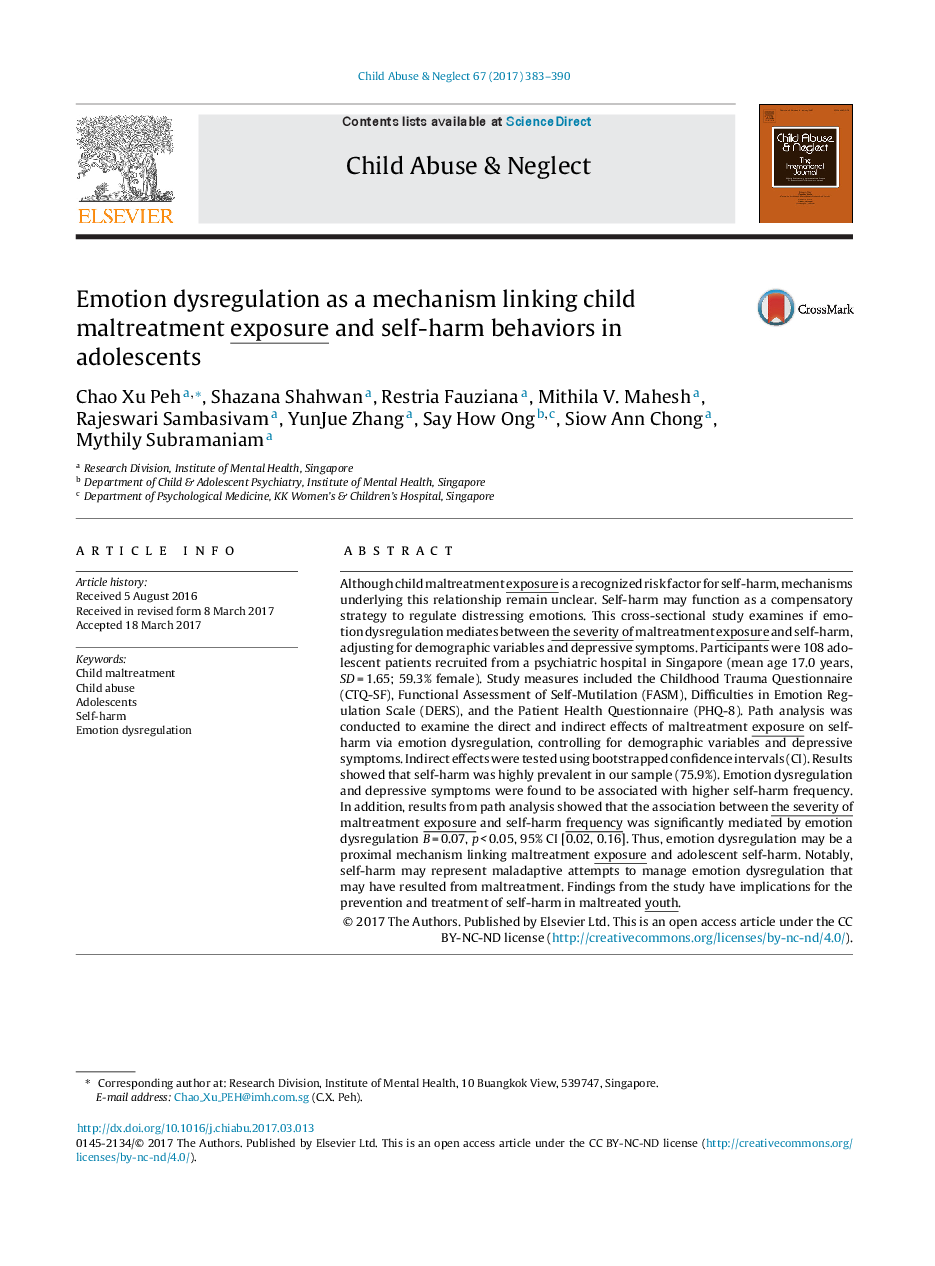ترجمه فارسی عنوان مقاله
اختلال هیجانی ناشی از سازگاری در ارتباط با قرار گرفتن در معرض بدرفتاری با کودک و رفتارهای خودخواهانه در نوجوانان
عنوان انگلیسی
Emotion dysregulation as a mechanism linking child maltreatment exposure and self-harm behaviors in adolescents
| کد مقاله | سال انتشار | تعداد صفحات مقاله انگلیسی |
|---|---|---|
| 122513 | 2017 | 8 صفحه PDF |
منبع

Publisher : Elsevier - Science Direct (الزویر - ساینس دایرکت)
Journal : Child Abuse & Neglect, Volume 67, May 2017, Pages 383-390
ترجمه کلمات کلیدی
بدرفتاری با کودک، کودک آزاری، نوجوانان، صدمه زدن به خود، اختلال عاطفی،
کلمات کلیدی انگلیسی
Child maltreatment; Child abuse; Adolescents; Self-harm; Emotion dysregulation;

